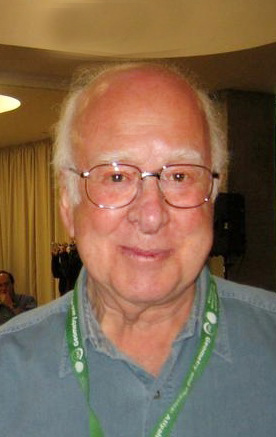This year has been an exciting time in the field of particle physics. A few months ago, scientists in China measured theta-13, a previously unknown mathematical parameter that helps explain neutrino oscillations.
In March, physicists from Fermilab analyzing old data from the defunct Tevatron particle accelerator announced they had discovered a promising hint of the Higgs boson. In February, the research director of CERN, the European Organization for Nuclear Research, said that by the end of the year, “we will either know that a Higgs particle exists or have ruled out the existence of a Standard Model Higgs.”
Since that time there have been even more developments, the news of which has trickled down to the public in a confusing and ludicrously grandiose form. Since we have not yet covered these new advances, here is an update and explanation of what has happened in particle physics over the summer.
In order to confirm a discovery of the Higgs particle, the CERN scientists must achieve two goals. Goal #1 is to verify that there is in fact a particle with the mass they expect the Higgs to have. They do this by firing particles at each other, carefully controlling the energy with which they collide, and measuring the results of the collision. Goal #2 is to check that this particle behaves the way theory predicts – i.e., whether they’ve actually discovered the Higgs boson or some other particle that would call for a rethinking of the Standard Model of particle physics. This involves a lot more complex and long-winded analysis of data.
Early this year, the Fermilab scientists came close to realizing the first goal. The Higgs particle exists only fleetingly, and must be inferred from the presence of other particles it is likely to decay into. Analysis of the Tevatron data showed unusually high numbers of these particles in certain regions, indicating a Higgs with a mass between 115-135 gigaelectronvolts (we use GeV, a unit of energy, to measure the mass of the particles because, by Einstein’s famous equation, mass and energy are essentially the same quantity). This was consistent with the narrower range of 124-126 GeV suggested by preliminary data from the Large Hadron Collider.
The problem with the Tevatron result was that it was not statistically significant. That means that, assuming the Higgs boson did not exist, the probability of seeing these results by random background fluctuation alone was unacceptably high. The excesses measured by Tevatron were 2.2 standard deviations above background expectations. The accepted threshold for a discovery in particle physics is five standard deviations, or approximately a one in three million chance of seeing these results in a world with no Higgs boson.
On July 4 of this year, two CERN particle detecting experiments, ATLAS and CMS, made an announcement: they had discovered, with a significance of five standard deviations, a particle with a mass of around 125.3 GeV. It was a landmark moment in the history of physics, but it is still only half the battle: they have only achieved goal #1.
Goal #2 means more experiments and a hard slog through mountains of data. To this end, the Large Hadron Collider, which had been scheduled for a long shutdown at the end of the year, has had its run extended until February, 2013. It’s just the nature of these discoveries that they do not come in one instantaneous moment of clarity, especially not when the experiment is 27 kilometres (km) long and involves thousands of scientists.
If the Standard Model is definitively confirmed or ruled out, the implications, while far-reaching, will take quite some time to become clear. Various theories will become more or less tenable, long unanswered questions will be solved or superseded, and new questions will arise. The discovery of this particle, whatever it may turn out to be, is certainly important, but we should not blow it out of proportion. No fundamental secrets of the universe have been discovered, no fields of knowledge have been instantly built up or toppled in one fell swoop, and life continues much as it had been.






Very nice and balanced brief article. Much better than the majority of briefs published in so many sources. This is due to a necessary consequence of what is known as the third scientific culture: an interaction between the scientists and the public. Finally the public information in newspapers in particular seems to lead the scientific truth which clearly cannot be achieved satisfactorily. The public looks for sensation and I seem to detect that many scientists are also after sensation. As the author Tom Ingram has so well explained scientific research and scientific truth is the work of an epoch. When there are thousands involved it becomes a problem and more difficult. However those who are pushing the Higgs boson will need to prove that it the cause of the acquisition of mass by other particles: This however will be very difficult to achieve no one seems to know what exactly is mass. The SM was on a good track record until it was hypothesized that mass is confirmed through a field like and ether with the massive Higgs boson as a crucial actor. But unfortunately the SM model as it was before the Higgs episode, was a better proposition for the reality of the universe and of its origin. Now we are in some turmoil. That’s why the author Ingram says proving either way the existence of Higgs boson will be decisive for the future of the science of cosmology.
Article made google news. good job.
Very unfortunately all the articles including this one, related to the recent discovery of Higgs Boson model failed the give credit to physicist Satyendra Nath Bose after whose work in the 1920s the class of particles “bosons” is named. The legacy of Europeans stealing intellectual property is still ON even so many years after colonial era.